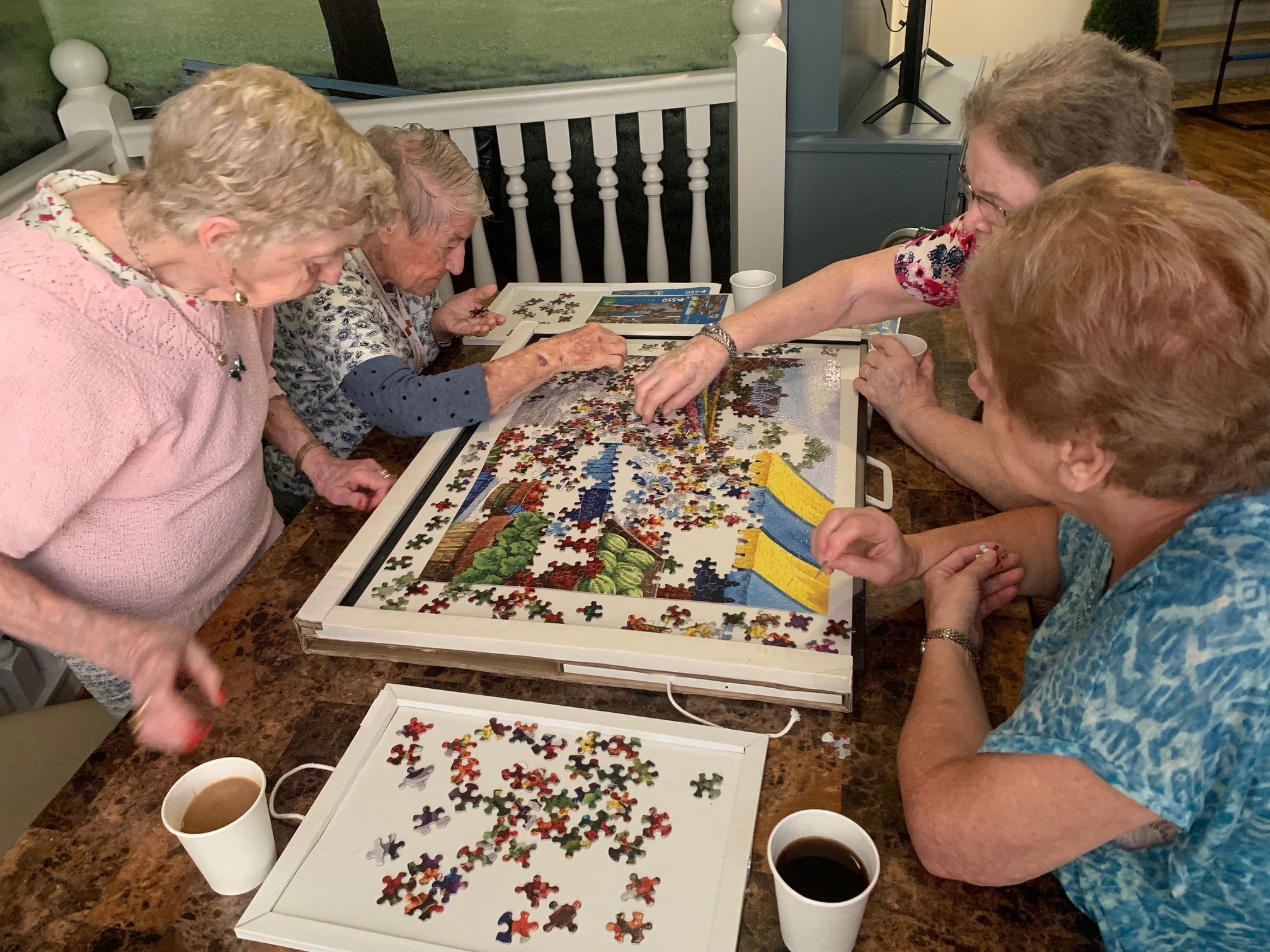
It’s no secret that our vision changes with age. Beginning in the early to mid-40s, many adults may find themselves reaching for glasses to see the menu in dimly lit restaurants. Or to read the fine print on labels.
Soon, this will progress to problems seeing clearly at close distances, especially when reading and working on the computer. This normal change in the eyes’ focusing ability, called presbyopia, continues to progress over time.
Then, sometime after 60 – along with wrinkles, creaky knees, and gray hair – conversations turn to swapping information about the best cataract doctors.
Understanding age-related vision changes
Just like your body, your eyes and vision change over time. While not everyone will experience all of them, the following are some of the more common age-related vision changes:
- Need for brighter light. Weakening muscles, smaller pupil size, and a decrease in the number of rods present in your eyes means they are less responsive to changes in light conditions, making it more difficult to see in low light.
- Difficulty reading and doing close work. The lens in your eye gradually becomes less flexible, making it harder for your eyes to focus on close objects. This development, called presbyopia, is a normal process that happens slowly over a lifetime. Generally, the need for reading glasses gets more pronounced until leveling off in your late 60s.
- Halos and glare. You may notice large halos around headlights at night, or the sun reflecting off windshields during the day. Changes in the eye lens causes light entering the eye to be scattered rather than focused precisely on the retina.
- Reduced tear production. Having adequate tears is essential for keeping your eyes healthy and for maintaining clear sight. As we age, the number of tears produced by the lacrimal glands naturally declines. This is particularly true for women experiencing hormonal changes. As a result, your eyes may feel dry and irritated.
- Changes in color perception. Cells in the retina that are responsible for normal color vision decline in sensitivity as we age. This causes colors to become less bright and the contrast to be less noticeable. In particular, blue colors may appear faded or “washed out.”
- Loss of peripheral vision. It is normal for the size of our visual field to decrease by approximately one to three degrees per decade of life. By the time you reach your 70s and 80s, you may have a peripheral visual field loss of 20 to 30 degrees. But, if your loss of peripheral vision happens suddenly or is leading to falls, difficulty walking in the dark, or problems driving, see your doctor as it can be a symptom of eye disease.
The 4 Most Common Age-Related Eye Diseases
Though vision loss isn’t a normal part of aging, as you get older, the risk of experiencing eye disease is higher. Many eye diseases have no early symptoms. Some to be aware of include:
Cataracts
According to the Canadian National Institute for the Blind (CNIB), more than 2.5-million Canadians have cataracts – a painless eye disorder that develops within the natural lenses of one or both of your eyes, either at the same or different times.
Cataracts are a clouding of the lens in the eye that comes from a build-up of protein. At first, you may not notice the change. But over time, cataracts can make your vision blurry, hazy, or less colourful. Some say the effect is like looking through a dirty car windshield.
The good news is that cataracts can be detected as part of a routine eye exam.
Age-related macular degeneration (AMD)
This condition causes the center of your vision to blur while the side or peripheral vision remains unaffected. The leading cause of blindness in North America in adults over the age of 55, the disease can also affect younger people. Risk factors include smoking, diet/nutrition, genetics, and family history of the disease.
Diabetic retinopathy
A diabetes complication that affects eyes, it is caused by damage to the blood vessels of the light-sensitive tissue at the back of the eye (retina).
Glaucoma
A largely hereditary condition that can cause irreversible blindness, glaucoma is known as the “silent disease” because symptoms don’t appear until very late in the disease process.
A recent study found that older adults with glaucoma have a higher rate of falling than their peers without glaucoma. This often contributes to a heightened fear of falling which can lead to avoidance of at-risk activities, reducing quality of life.
Detected early enough, most cases can be controlled with eye drops alone. Laser and surgery may also help. Read more about glaucoma on the Canadian Association of Optometrists web site.
What you can do about age-related vision changes
Luckily, there are many things that you can do to protect your eyes – and eyesight – at any age:
- Wear sunglasses that block ultraviolet (UV) radiation and a hat with a wide brim when you are outside.
- Quit smoking, which increases the risk of eye diseases.
- Reduce high blood pressure and/or manage diabetes (if you have it).
- Eat nutritious foods that support eye health.
- Be physically active and maintain a healthy weight.
- If you spend a lot of time at the computer or focused on one thing, take a break every 20 minutes to look about 20 feet away for 20 seconds to prevent eye strain.
The bottom line: Eat right, exercise, drink lots of water, and don’t smoke. Also, see your eye doctor every two or three years, and once a year when you hit your 50s. Finding and treating any problems early can help protect your vision and prevent vision loss.
How Vision Affects a Senior’s Quality of Life
The truth is, vision challenges can have a negative impact on an ageing person’s emotional health and quality of life. Recognizing this will help you and your loved one put a plan in place. One that helps preserve their wellbeing and desired lifestyle as their vision decreases. Ways seniors may be impacted include:
- Feeling as though they have lost their independence and will require even more care.
- No longer being able to participate in some of their favorite activities in the same way, such as reading, small crafts, and detailed work.
- Feeling as though they can no longer engage in volunteer work and other activities that give them a sense of purpose.
- Being embarrassed about their diminished ability and concerned that they may fall.
Fortunately, there are ways you can help your parent boost their quality of life even as they adjust to changes in vision. At All Seniors Care residences, we help older adults adapt their activities, showing them new ways to engage with the world and enjoy life as they age in place.
If you’re interested in learning more about our various communities across Canada, explore our website. You will find answers to important questions like what are assisted living costs and what is the best care option for someone with vision loss. Click here to learn more about our assisted living Calgary, senior housing in Regina, and seniors housing in Whitby.
Writer – Julianna McLeod
Julianna is a health and wellness expert at All Seniors Care. Her mission is to create content that empowers seniors to form sustainable solutions for lasting health and happiness. She is an experienced writer, editor, and Recreational Therapist living in Toronto.

